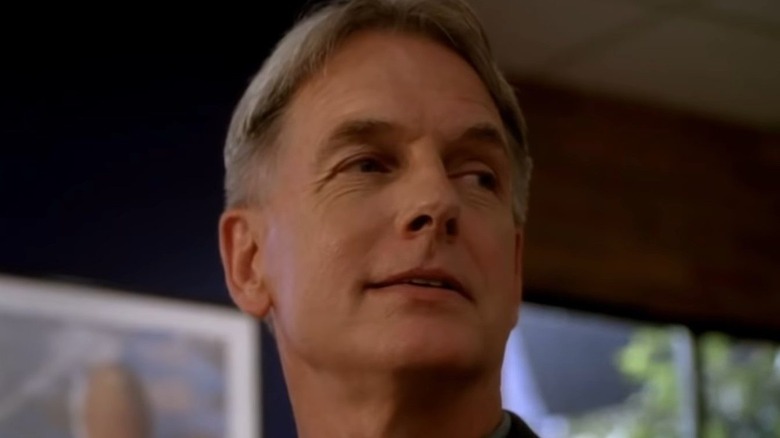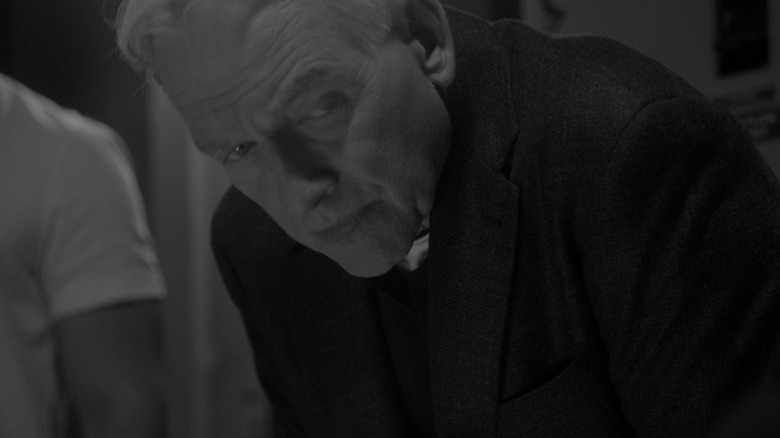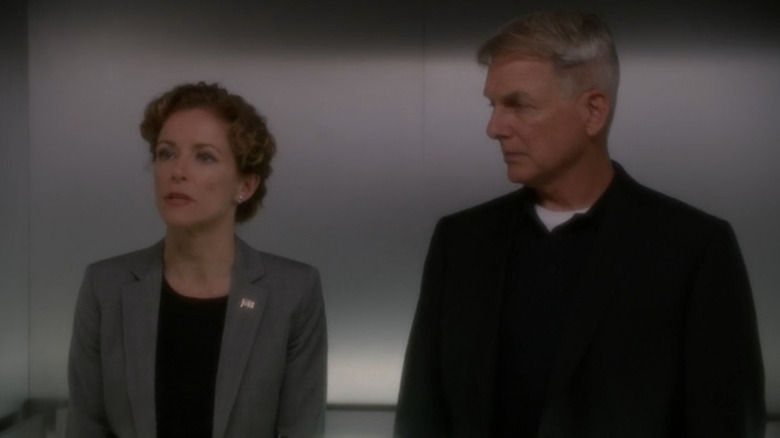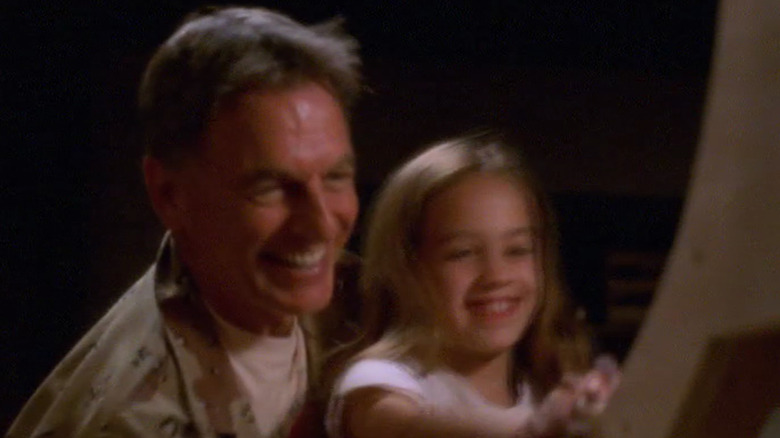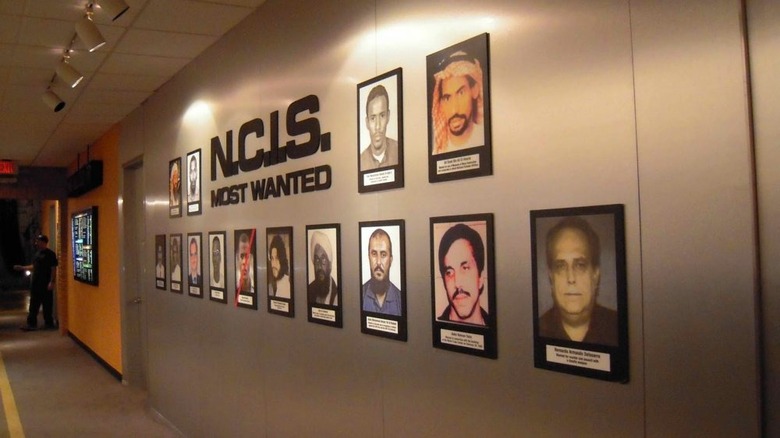Things You Only Notice In NCIS After Watching It More Than Once
"NCIS" is one of the most-watched television shows in history. Since 2003, the CBS police procedural series has aired more than 400 episodes.
Though everyone knows the series is largely formulaic (and that's a big part of the appeal), there are a handful of recurring events that most people only begin to notice after having watched many episodes. In addition to the fact that the bad guys are almost always caught in the last few minutes of each episode — as is true in most police procedural shows — there are certain stylistic choices in the series that appear time and time again with little to no explanation.
After nearly two decades on television, these are the details that the most dedicated viewers have noticed are slightly out of the ordinary for a police procedural like "NCIS," and specific to the series itself.
Each segment opens with a flash forward
Since Season 2, Episode 4 (an episode titled "Lt. Jane Doe"), nearly every episode of "NCIS" has opened with a black and white shot that portrays a flash-forward in time to the end of the coming segment. These short clips are referred to among fans as "foofs" or "phoofs" as a result of the accompanying sound the plays when they appear. Additionally, each individual segment of an episode has its own "phoof," normally allowing for up to six "phoofs" per episode, depending on the number of commercial breaks. If an episode requires a "Previously On..." segment, its final shot serves as the first "phoof" of the episode. If the final shot of the episode is likely to include a spoiler, the "phoof" tends to show the moment just preceding the spoiler.
While the exact style and technique of the so-called "phoofs" has changed over the years (some early examples show a single frame while others show a quick video), the mechanism for the beginning of each segment of the series has remained unchanged since Season 2. Each spinoff series of "NCIS" also features a similar opening, with "NCIS: LA," "NCIS: New Orleans," and "NCIS: Hawai'i" all having their own slight variations on appearance and style.
Gibbs likes to do meetings in elevators
One of the recurring tropes on "NCIS" is Gibbs's special method of hosting a private meeting. In times of crisis or when individual consultation with a team member is required, Gibbs is perfectly comfortable getting in the elevator and pressing the emergency shutoff switch to stop it in between floors. Here, he can have an off-the-record meeting with his employees. While the practice has been seen on other series, nowhere has it been more prominent than on "NCIS" with Gibbs routinely cornering his underlings (and his superiors) in the elevator for an up-close-and-personal meeting.
In Season 19, Episode 5, former FBI Agent Aiden Park decides that a one-on-one meeting with NCIS Special Agent Timothy McGee is in order and confronts him in the bathroom. At the end of their meeting McGee politely points out that the bathroom isn't the most appropriate place for such conversations and kindly suggests "a stopped elevator or something." Park, not entirely up to speed on Gibbs's usual eccentricities, gives McGee a confused look in return. Park takes over as team leader in the same episode, following Mark Harmon's departure from the series in Season 19, Episode 4. Whether he will continue Gibbs's tradition or start his own is yet to be seen.
Multiple actresses have played Gibbs's daughter
One of the saddest storylines on "NCIS" has been told through only a handful of episodes spread out across nearly two decades worth of storytelling. Long before audiences around the world got to know him, Gibbs suffered a terrible loss when his wife and daughter were killed by a drug dealer named Pedro Hernandez. Gibbs eventually got extralegal revenge on Hernandez by killing him in Mexico. NCIS Chief Forensic Analyst Abby Sciuto's discovery of this fact in Season 7 leads Gibbs and the rest of the NCIS team to relive this terrible moment in Gibbs's life.
Through a multitude of flashbacks, the story of Gibbs's wife and daughter, Shannon and Kelly, has been examined repeatedly. Shannon Gibbs has most often been portrayed by Darby Stanchfield, while a handful of episodes set before her marriage to Gibbs show Shannon portrayed by Aviva Baumann. However, even eagle-eyed viewers may not have realized that Kelly Gibbs has been portrayed by a total of four different actresses. In Seasons 3 and 4, Mary Mouser (who would later appear as Samantha LaRusso on Netflix's "Cobra Kai") played Kelly Gibbs. Brenna Radding then played her in Season 5 before Sam Schuder took over the role in Season 9. In Season 13, Kelly Gibbs made her final appearance on screen as played by Mila Brener.
The Most Wanted board is kind of out of date
In addition to the glaring skylight and the peculiar orange color of the walls, one of the central features of the "NCIS" squad room is the set of "Most Wanted" posters in the back, just a few steps away from the elevator. These posters have appeared on the series since the pilot episode and, after so many years, they have become wildly out of date.
When Seal Team Six killed 9/11 mastermind Osama Bin Laden in 2011, "NCIS" producers scrambled to alter previously filmed episodes in order to digitally insert an X over his face to indicate the Al Queda leader's death (via Vulture). In subsequent seasons, a red X has been added over Bin Laden's face on set. In addition to including Bin Laden's picture, the board has also featured the faces of "NCIS" characters like Ari Haswari (Rudolf Martin) and "NCIS" creator Donald Bellisario.
10 years after Bin Laden's demise, the wall is mostly unchanged and though Bin Laden's picture remains crossed out, one has to wonder what the utility is in retaining a ten-year-old "Wanted" poster for a dead man?
